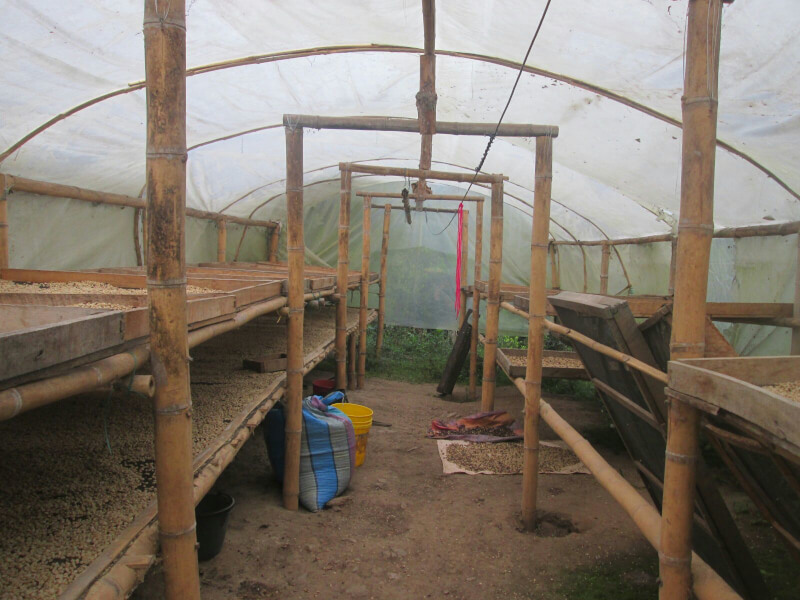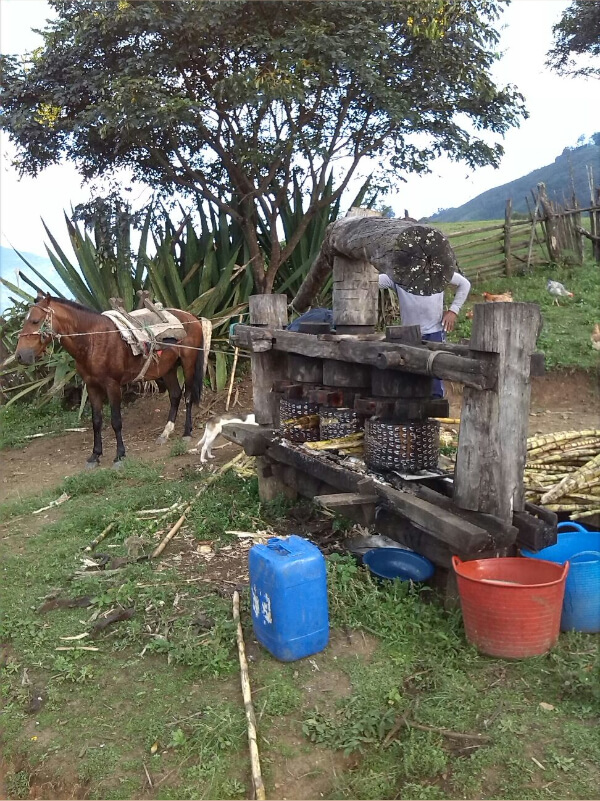COLOMBIAN COOPERATIVE OF THE NASA COMMUNITY
FONDO PAEZ, JAMBALÓ, CAUCA, COLOMBIA

DISCOVERING COFFEE CULTURE AND INDIGENOUS PEOPLES
The reason for the visits in coffee farms in 2017 and 2019: to learn how coffee is grown, and how live the people who produce it.
The Fondo Paez Colombian cooperative is made up of 450 producer families from the Nasa indigenous community. They own plots of between 1 and 3 hectares. That's not much, especially as average production per tree is less than 500 grams of cherries. To rise it, considerable effort is devoted to the production of organic fertilizers, made from components available on the farms, such as animal dung or microorganisms from forest humus. More than the financial benefits, it's the strengthening of social ties and the desire to protect their land that motivates the members. All year round, at 6 a.m., they head for the coffee plantations to work in the fields, using small tools. The multiplicity and infinity of the tasks is striking. The coffee trees require precise care, at the right time and of the right kind. The plantation requires constant upkeep, so every visit is coupled with weeding to facilitate access.

In addition to work in the fields, the administrative work and life of organized agricultural cooperatives is fascinating. Added to this is domestic work, which is all the more laborious because there is no electrical equipment such as washing machines or vacuum cleaners, but everyone pitches in and mutual help is instinctive. A project to build leisure facilities is currently being studied in these high mountains where, for the moment, the swimming pool is a wild river that is dangerous for the children who swim in it.
The tenacity and resilience of the coffee growers and their families is admirable. The way of life of the Nasa indigenous community (also known as Paez) is, like many others, priceless. We describe it in greater depth in our book One Hectare Of Coffee.

MAIN PATH TO THE VILLAGES

SECADERO: BUILT TO DRY COFFEE

OUTDOOR FURNITURE

COLLECTIVE MEAL FOR HARVESTERS

DAMAGED BASKETBALL COURT OF THE CAFETEROS

FLOWERING COFFEE TREES IN A FOREST

FOLLOWING FAIR TRADE RULES

NEW TREES EMERGING FROM THE MAIN TRUNK

POST-HARVESTING

COFFEE & BANANA TREES

TRAPICHE OR MILL FOR SUGAR CANE

BEANS PLANTED TO PREPARE THE COFFEE FIELD.

WEARING HEAVY COFFEE BAGS

NURSERY

MIXING WATER, EARTH AND PINE THORNS TO BUILD WALLS
